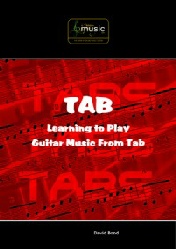



Learn from the best teachers around the world from the comfort of your own home
Featured Teachers
- Bill Hart
- Duncan Jones
- Emrys Baird
- Jim Covington
- Colin Cartmell
- Daniel Realpe
- Simon James
- Pauric Mather
- Niels Vejlyt
- David Bond
- Matt Warnock
- Dylan Kay
- Andrea Basiola
- MDS
- Carlos Viegas
- Matt Pearce

Learn the following styles:
- Rock
- Blues
- Country
- Classical
- Jazz
- Jazz Fusion
- County Rock
- Pop
- Bluegrass
- Slide
- Heavy Metal
- Shred





| Terms of Use | Privacy Policy | Teachers Wanted | Downloads | Legal | Returns Policy | Prize Rules|

Connect with us:


Internet Guitar Lessons
Professional Lessons
At Affordable Prices







Ear training is a process by which musicians learn to identify intervals, chords, rhythms, and other basic elements of music. Ear training plays an important part in singing, since one must be able to hear music in one's head and match pitch before it is possible to sing it reliably. Moreover, reproducing sounds by singing them is a reliable way to verify that they are heard correctly.
One does not need perfect pitch to succeed at ear training; one goal of ear training is the development of relative pitch Interval recognition. Interval recognition is also a useful skill for musicians: in order to determine the notes in a melody, a musician must have some ability to recognize intervals.
Some music teachers teach their students relative pitch by having them associate each possible interval with the first two notes of a popular song. Below are some examples for each interval
Unlike absolute pitch (sometimes called "perfect pitch"), relative pitch is quite common among musicians, especially musicians who are used to "playing by ear", and a precise relative pitch is a constant characteristic among good musicians. Also, unlike perfect pitch, relative pitch is common among non-musicians and can be developed through ear training.
Solmization is a system of attributing a distinct syllable to each note in a musical scale. Various forms of solmization are in use and have been used throughout the world. In Europe and North America, solfège is the convention used most often. The seven syllables normally used for this practice in English-speaking countries are: do, re, mi, fa, sol, la, and ti (with a chromatic scale of ascending di, ri, fi, si, li and descending te, le, se, me, ra).





















